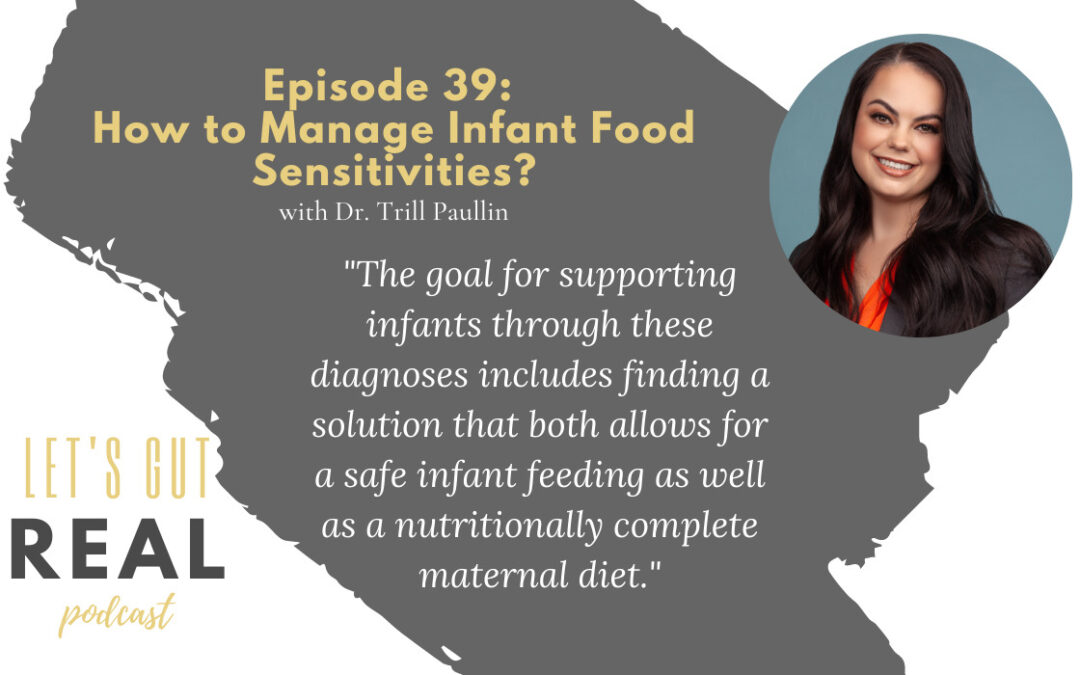It’s not always easy to identify what may be causing infant colic or infant allergy reactions. Infant food sensitivities are common and can result in projectile vomiting, reflux, mucousy/bloody stool, and more – which can be very distressing to parents and lead to unnecessary dietary restrictions.
Nutrition Pearls for Infant Food Sensitivities
- It isn’t easy to identify specific infant food allergies so working alongside a Registered Dietitian or Allergy Specialist can go a long way to supporting this journey
- Although there is a big spectrum of symptoms, consider that not all the symptoms need to be present for a diagnosis
- Be aware that the typical foods seen with non-IgE mediated allergies isn’t always the same as common allergy triggers
- Know that the goal for supporting families through these diagnoses includes finding a solution that both allows for a safe infant feeding as well as a nutritionally complete maternal diet.
- A nutritionally complete maternal diet is important both for the mother and for the quality of the breastmilk.
- Total elimination diets can be extremely risky and should be done under the directions of a health professional.
- Research shows that both transfer and clearance actually happen very quickly which is something that is largely misunderstood
- Consider that current protocol surrounding infant food sensitivities can unintentionally encourage eating disorders, disordered eating behaviour, and food anxiety among mothers which reinforces the importance of working alongside a registered dietitian
This week I interview Dr. Trill Paullin on Infant Food Sensitivities, how they arise and what we can do to help manage them.
Dr Trill is a Molecular Biologist and mother to two daughters who had severe infant food sensitivities and reactions to proteins transferred from my diet to her breast milk. After she processed the painful fact that she could hurt my children through breastfeeding, she started researching how to produce breast milk they could properly digest. She discovered that many parents experience the same troubling situation. Through this experience, she wanted to create a place for parents to find answers to their questions about infant food sensitivities and empower them to continue their breastfeeding journey. That was how Free to Feed was born. Free to Feed is starting this mission by first creating an at-home test strip that will allow mothers to analyze their breast milk for allergens.
We talk about:
- How Trill became interested in the field of infant allergies
- The origin of Trill’s company Free to Feed
- What the differences are between non-IgE mediated allergies (FPIAP and FPIES) and IgE mediated allergies
- How the symptoms between these three diagnoses differ
- How to identify what may be causing infant allergies
- What the treatment options are for mothers trying to cope with infant allergies
- How Trill was able to gather data in this area of research that was largely unrepresented in the literature
- The research around transferability and reaction timing
- The lack of support for families dealing with non-IgE mediated infant allergies and the importance of validating these experiences
- What Free to Feed offers today to help parents navigate this journey.
- At-home breastmilk test strips as well as infant allergen friendly multivitamins
Connect with Trill on her website at freetofeed.com on Instagram @free.to.free on Twitter or on her Facebook here as well!



Recent Comments